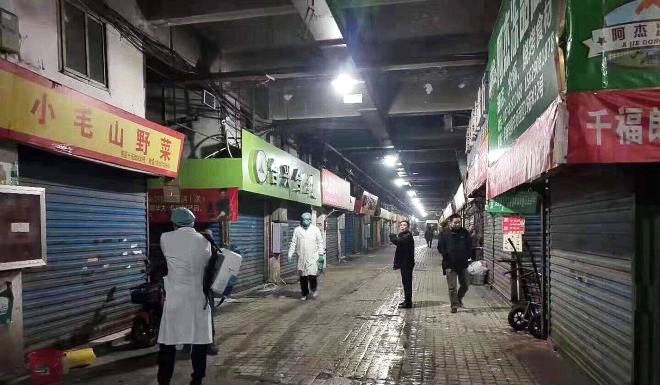
Speculative Robotics
Can Robot Sentinels Warn of Viruses?
Mobile robots bristling with sensor tech and AI—like an electronic “smart nose”—might provide early warning enough to prevent Wuhan-like disasters
We’ve been warned!
For all the terror that the coronavirus has caused, it’s really just a shot across the bow of humanity, a warning that “next time” something much worse may this way cometh.
How will humanity prepare for next time? It appears that robot sentinels properly equipped with sensor tech could provide early warning enough to prevent a disease outbreak from going rogue…or worse, mushrooming into a full-blown pandemic.
One US patient, a man in his 30s, symptomatic since January 16, resides in a special isolation unit at Providence Regional Medical Center in Everett, Washington. Attending the patient are nurses and other caregivers who volunteer to be part of the Biocontainment Evaluation Specialty Team. Those in contact suit up accordingly. “At risk are those within six feet of an infected person and especially those who have been exposed to that person’s coughing or infected droplets.”
 Also attending the patient is a mobile telepresence system; one of Yulan Wang’s InTouch Health robots. Wearing a stethoscope, camera and microphone, the telepresence robot has been a source of diagnostic contact for medical staff as well as members of the Centers for Disease Control and Prevention (CDC). The robot lessens human contact with the patient, and therefore, lessens staff exposure to the coronavirus.
Also attending the patient is a mobile telepresence system; one of Yulan Wang’s InTouch Health robots. Wearing a stethoscope, camera and microphone, the telepresence robot has been a source of diagnostic contact for medical staff as well as members of the Centers for Disease Control and Prevention (CDC). The robot lessens human contact with the patient, and therefore, lessens staff exposure to the coronavirus.
If robots can be used to treat sick patients, could robots be enlisted to hunt down the sickness that made the patient sick in the first place? Ben Franklin’s famous “ounce of prevention rather than a pound of cure.”
Prevention is a key dimension now missing from the virus/bacteria detection wars. Why is that? There are certainly enough high-quality sensor systems in existence that are eminently capable of sniffing out nasty bacteria and all sorts of human-unfriendly viruses.
And no one has to guess where to let this mobile robot bristling with sensors roam: large, urban wholesale food markets are good for starters. Why is that?

“A study notes that patients who became infected with the virus—which is a type of virus called a coronavirus and was named 2019-nCoV by the World Health Organization—were exposed to wildlife animals at a wholesale market, where seafood, poultry, snake, bats, and farm animals were sold. The team uncovered evidence that the 2019-nCoV likely resided in snakes before being transmitted to humans.”

Seems no one has yet taken the currently available detection tech and hoisted it onto a mobile, autonomous robot for use in patrolling for virus trouble spots.
Here are four that need to get aboard a mobile robot real soon.
- The electronic nose.
Research at Oregon State University has pushed science closer to developing an “electronic nose” for monitoring air quality, detecting safety threats and diagnosing diseases by measuring gases in a patient’s breath.
An electronic “nose” has nanosized pores that selectively adsorb gases, similar to a sponge. “The volatile organic compounds humans emit, such as through our breath, are filled with biomarkers for multiple diseases, and studies have shown that dogs—which have twice the number of different olfactory receptors as humans—can detect diseases with their nose.”
2. Real-cell microsystems:
At the University of Maryland’s A. James Clark School of Engineering, researchers say: “Today’s biochemical detectors are slow and produce an unacceptable number of false readings.
“They are easily fooled because they often cannot distinguish subtle differences between deadly pathogens and harmless substances, and cannot fully monitor or interpret the different ways these substances interact with biological systems. They are incorporating “real cells into tiny micro-systems to detect chemical and biological pathogens.”
“For example, cell-based sensors could detect the presence of harmful bacteria in ground beef or spinach, or detect the local origin of specialty foods like cheeses or wines.”
3. BioFlash (a/k/a PANTHER):
Then there’s PANTHER (for PAthogen Notification for THreatening Environmental Releases), which is an MIT-developed device, and as its acronym indicates, can detect harmful bacteria or viruses in the air, and do the detection and identification in less than 3 minutes. “Innovative Biosensors has taken the laboratory prototype and made a commercial version (BioFlash) that could monitor buildings, subways and other public areas, plus farms and food processing plants.” can currently detect 24 pathogens, including anthrax, plague, smallpox, tularemia and E. coli, etc.
4. The influenza computer model:
Four major US national laboratories have worked together to develop a computer model to help airport authorities screen passengers for pandemic influenza. The tool can help estimate false negatives, people with influenza who slip through the screening process, and so assess the risk of infected passengers unknowingly spreading disease across the nation.
OK, we’ve been warned. Let’s get crack’n!
